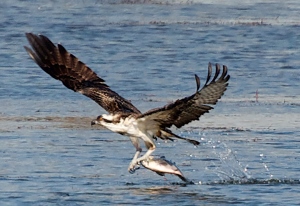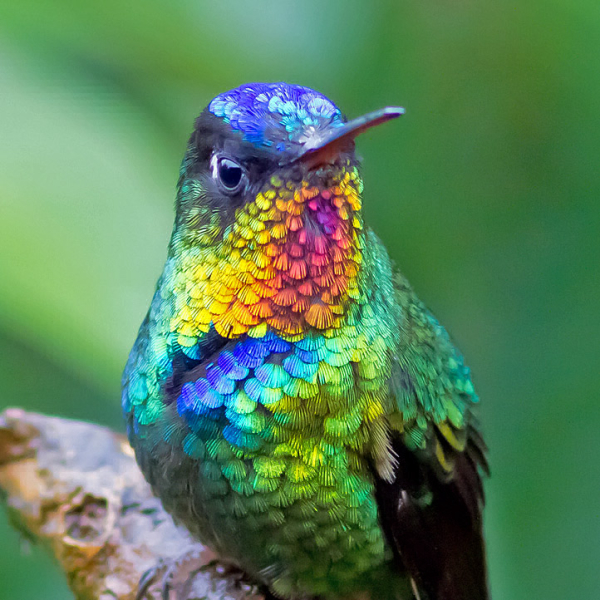The osprey: March’s Migratory Bird Treaty Centennial featured bird
 Keep your eyes to the skies in the next week or two, as ospreys soon will be returning to Michigan. They migrate south for the winter to southern North America, Central America and even South America. They return to Michigan in late March or early April.
Keep your eyes to the skies in the next week or two, as ospreys soon will be returning to Michigan. They migrate south for the winter to southern North America, Central America and even South America. They return to Michigan in late March or early April.
These majestic predators can be identified by their dark brown backs and white undersides. Females have chestnut brown feathers, often described as necklaces, around their necks. Their wingspan stretches 4.5 to 6 feet, and they weigh about 2 to 4 pounds.
Known as the “fish hawk,” the osprey is an amazing angler and diver. An osprey can dive up to 3 feet into the water after its prey – fish. In Michigan, 99 percent of an osprey’s diet consists of fish. They are excellent anglers too, with a 70 percent success rate! They have several special adaptations to assist in fishing, including an extra bend in their wings to mimic wrists, which aids in diving, and special grips on their feet called spicules to help catch and hold onto fish.
Osprey can be found near shallow bodies of water like small lakes, marshes and rivers. They construct their nests on snags (dead trees), cliffs, power line poles, man-made platforms and cell phone towers. An osprey pair uses the same nest site year after year, and both the male and female osprey help build the nest. The male generally brings nesting material to the female, and the female arranges the sticks and twigs to suit her liking.
The female lays three or four eggs, which hatch after about 38 days. Young ospreys take flight around seven or eight weeks of age and then leave the nest site in September to strike out on their own. Their first migration generally takes them to Central or South America, where they spend two years perfecting their hunting skills before returning to North America.
As with many other top predators, the use of the pesticide DDT – in the years after World War II – negatively affected osprey populations. The bioaccumulation (buildup) of DDT and other pesticides in the ospreys’ bodies resulted in brittle, extremely fragile eggshells. The body weight of the parents broke the eggs, and very few young were born. The U.S. Environmental Protection Agency banned DDT use in 1972.
Ospreys were listed as threatened in Michigan at one time. After Michigan’s Osprey Reintroduction Project (1990-2000), the species has rebounded enough to be upgraded to a species of special concern. Protections offered by the Migratory Bird Treaty Act also helped bolster osprey populations.
Throughout much of Michigan, and especially in the southeastern part of the state, ospreys are banded each year. At about five to six weeks of age, and before they can fly, osprey chicks are given a band on their leg, usually silver and bearing a serial number specific to that bird. These bands are placed on young birds so that scientists can monitor and track the dispersal, migration, life span, reproductive success, behavior and population growth of ospreys.
Since 2013 in southeastern Michigan, 14 ospreys have been outfitted with GPS backpacks. These backpacks give scientists insight into the migratory patterns of the young birds. The exciting part is that anyone can follow along and find out where the birds have been just by visiting www.michiganosprey.org. Move the cursor along the route to see GPS coordinates and time and date information for each leg of the osprey’s journey.
Ozzie, a young female osprey who was outfitted with a GPS transmitter in the summer of 2014, will likely begin her migration to North American very soon. Watch along and wish her well as she travels from her current home in Columbia, finds a mate and begins to nest in North America!






